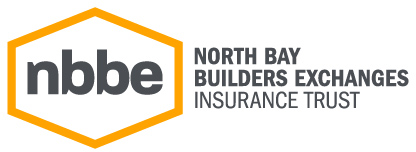Medical
Medical Plan Options
Your Title Goes Here
Your content goes here. Edit or remove this text inline or in the module Content settings. You can also style every aspect of this content in the module Design settings and even apply custom CSS to this text in the module Advanced settings.
Anthem Medical Plan Options
Anthem Blue Cross offers access to a large national network of providers who agree to discount their fees for services.
PPO plans give you flexibility and choice, for a price. Under these plans, you are not required to select a primary care physician (PCP) and you can access different physicians and specialists at your own discretion. While you may go to any doctor or hospital each time you need care, your copay or coinsurance will be lowest when you go to an in-network PPO provider. Also, in-network providers will file all claims for you, saving you time and hassle. If you go to an out-of-network provider, you will have to pay the provider in full before obtaining services and you are responsible for filing a claim to Anthem Blue Cross for reimbursement. In addition, out-of-network providers may balance bill you for additional charges if their fees are more than Anthem’s maximum allowed amount. You will be responsible for paying any charges above the allowed amount out of your own pocket and they will not accrue towards you annual deductible or out-of-pocket maximum. You’ll need to meet an annual deductible before the PPO plans start paying for some services.
Benefits Summaries
- Anthem Value Classic PPO 1500
- Anthem Value & Standard Rx
- Anthem Standard PPO 1000
- Anthem Premier Classic PPO 500
- Anthem Premier Clasic PPO 500 Rx
The EPO plan is similar to an HMO in terms of requiring you to see an in-network provider with Anthem. Out-of-network care isn’t covered, except for some emergency care. You generally pay a copayment for each office visit although some services do require a coinsurance after the plan deductible has been met. Unlike an HMO, you are not required to select a primary care physician (PCP) and you don’t need a referral to see a specialist. You may need to obtain authorization from Anthem before you receive certain types of care.
Benefits Summary
The High Deductible Health Plan (HDHP) is structured similarly to a PPO as you are able to access care in and out of network and see a specialist without a referral. However, unlike the PPO, the deductible under this plan must be met before the plan starts paying for any and all services (with the exception of preventive care). Also, unlike the PPO, the HDHP is compatible with a Health Savings Account (HSA) which helps you pay for eligible healthcare expenses using your own tax-free dollars.
Benefits Summary
Additional Carrier Resources:
Kaiser Medical Plan Options
Kaiser’s network is a unique model as the insurance company employs hospitals, doctors, and nurses which you would receive all treatment from, except in case of an emergency, meaning you do not have access to non-Kaiser doctors or out-of-network doctors. However, this plan design does eliminate any hassle with filing claims. Kaiser’s “closed” system offers high quality care and benefits at a low cost relative to other insurance companies.
HMO plans give you more predictable costs with copays but less flexibility as you are only able to see in-network (Kaiser) providers. In addition, a primary care physician (PCP) manages your routine care, referrals and hospital stays. Depending on the HMO plan you enroll in, you may be required to satisfy a deductible before the plan benefits kick in for certain services.
- Kaiser Bronze DHMO 6300.75
- Kaiser Gold DHMO 500.30
- Kaiser Gold HMO 0.30
- Kaiser Platinum HMO 0.15
- Kaiser Silver DHMO 1000.55
The Kaiser High Deductible Health Plan (HDHP) allows you to access care in and out of network and self-refer to certain specialists. The deductible under this plan must be met before the plan starts paying for any and all services (with the exception of preventive care). The HDHP is compatible with a Health Savings Account (HSA) which helps you pay for eligible healthcare expenses using your own tax-free dollars.
Additional Carrier Resources:
Medical Key Terms
Balance Billing: In-network providers are not allowed to bill more than the plan’s allowable charge, but out-of-network providers are. For example, if the provider fee is $100 but the plan allows only $70, an out-of-network provider may bill YOU the extra $30. This is called balance billing.
Brand Prescription Drug: A drug which is produced and distributed under patent protection with a trademarked name from a single drug manufacturer. A generic drug may be available if the patent has expired.
Coinsurance: The percentage cost share between the insurance carrier and a member.
Copay: The dollar amount a member must pay directly to a provider at the time of service.
Deductible: The amount of healthcare costs you have to pay for with your own money before your plan will start to pay anything.
Explanation of Benefits (EOB): The statement you receive from the insurance carrier that details how much the provider billed, how much the plan paid (if any) and how much you owe (if any). In general, you should not pay your provider until you have received this statement.
In & Out-Of-Network: In-network services will always be the lowest cost option. Out-of-network services will cost more, or may not be covered. Check your plan’s website to find doctors, hospitals, labs, and pharmacies that belong to the network.
Maintenance Medications: Medications taken on a regular basis for an ongoing condition. Examples of maintenance medications include oral contraceptives, blood pressure medication and asthma medications.
Non-Preferred Brand Drug: A brand drug for which alternatives are available from either the insurance carrier’s preferred brand drug or generic drug list. There is generally a higher copayment for a non-preferred brand drug.
Out-of-pocket Maximum: Protects you from big medical bills. Once costs “out of your own pocket” reach this amount, the plan pays 100% of most eligible expenses for the rest of the plan year.
Preferred Brand Drug: A brand drug that an insurance carrier has selected for its preferred drug list. Preferred drugs are generally chosen based on a combination of their clinical effectiveness and their cost.
Preventive Care: Measures taken to prevent or detect common healthcare conditions when no symptoms are present. Services covered under preventive care include routine physical examinations, immunizations and routine tests for cancer.
Specialty Pharmacy: Provide special drugs that are used to treat complex conditions such as multiple sclerosis, cancer and HIV/AIDS.

